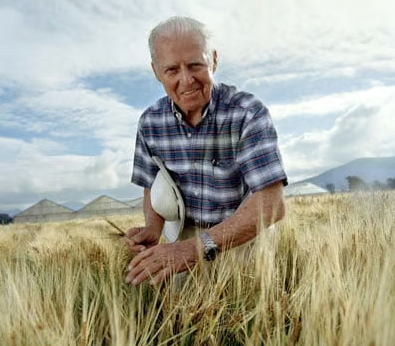This is the VOA Special English AGRICULTURE REPORT.
The World Food Prize is being presented this week in the American state of Iowa. Each year, the World Food Prize honors people who have improved the quality of world food supplies. The winner this year is Per (PARE) Pinstrup-Andersen of Denmark.
The award ceremony will include a special celebration to honor the fifteenth anniversary of the World Food Prize. Officials plan to honor the work of Norman Borlaug (BAWR lawg).
Mister Borlaug won the Nobel Peace Prize in Nineteen-Seventy for developing new kinds of wheat. He later had the idea for a World Food Prize. He wanted to make it equal to a Nobel Prize for Food and Agriculture.
Many people say Norman Borlaug is responsible for starting improvements in the world food supply in the Nineteen-Sixties. They thank him for saving the lives of hundreds of millions of people.
Norman Borlaug was born in Nineteen-Fourteen in Cresco, Iowa, a small farming community. He later attended the University of Minnesota. He completed studying forestry there in Nineteen-Thirty-Seven.
Mister Borlaug worked briefly with the United States Forest Service before returning to the University of Minnesota to continue his studies. He worked for the DuPont Company before joining the armed forces during World War Two.
In Nineteen-Forty-Four, the Rockefeller Foundation sent Mister Borlaug to Mexico to work as an agricultural scientist. The group asked him to develop wheat plants that would produce large amounts of grain in warm climates. For the next sixteen years, he studied problems that were limiting wheat production in Mexico. He also helped to train many young scientists.
In Mexico, Mister Borlaug developed several kinds of wheat plants that resisted disease. His plants were able to grow in many different climate conditions. They also were extremely productive.
These plants and improved farming methods changed Mexican agriculture. In the Nineteen-Sixties, India, Pakistan and other countries began to grow the wheat developed by Mister Borlaug. These crops changed some nations from grain importers to grain exporters. They reduced the risk of starvation in many places. Today, the improvements to world agriculture from such crops are known as the Green Revolution.
This VOA Special English AGRICULTURE REPORT was written by George Grow.
